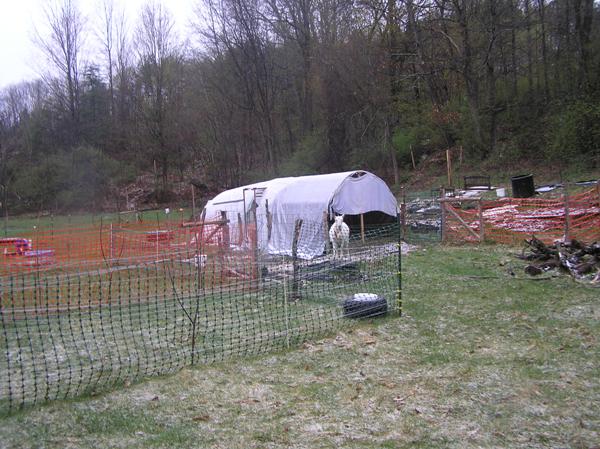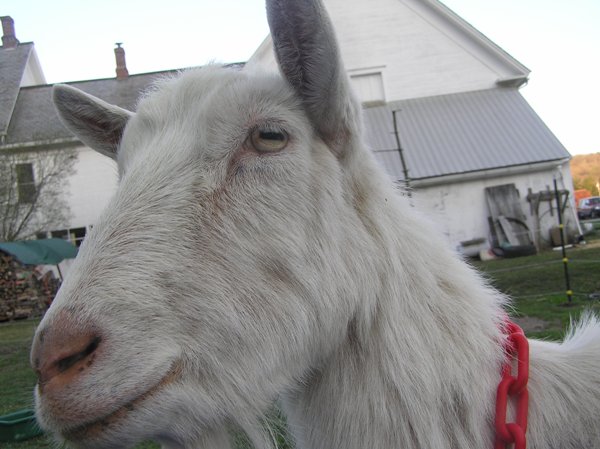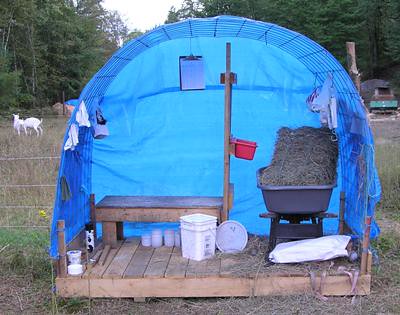It's April, Remember?

It's fun to camp, and Ruffles has been depressed since the delivery. Companionship seems to help. Well, companionship that doesn't eat her grain, anyway. It's a little tight in there for Ruffles, the kids and me, but Ruffles does like to snuggle. No, really.
So I have been sleeping out in the goat house. Last night it rained. A lot. And I was reminded I should have put a plastic liner under an old tarp like this. I had over estimated the water proofness of that blue tarp. I got dripped on all night. I contemplated going inside, but I was warm and dry inside my sleeping system, so I weathered it. In the morning I awoke to snow on the ground. Maybe I should have gone in.

The other morning I tore down half of the winter chicken house, flopped the panels over the fence and reassembled it as a two ended goat shelter. With this, I have two nursery shelters and a main shelter. We have a delivery due any moment and another at the end of the week. Pretty soon, Little, the whether, will be the only adult not nursing kids. In there is a bed of coarse wood chips and straw on top of that. It gets everybody up off the ground, keeping them warm and dry. Even the drips last night didn't really get the area wet. This morning I salvaged a piece of plastic from the chicken house and used it to line the tarp to stop the drip. I'll find out tonight how effective it is.


It has been really nice weather for more than a week. Into the seventies in early April.

The Sunny weather was helping Ruffles ward off the blues. I'll have to pay attention to her to get throuhg this wet weather.
Labels: goat, Goat Shelter, saanen














